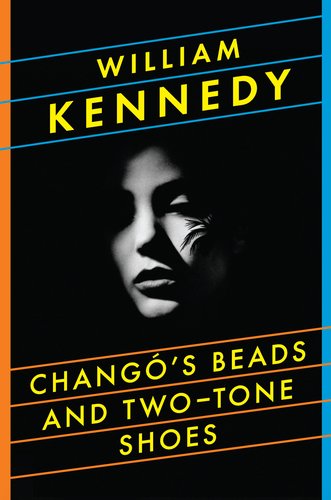Review: Changó's Beads and Two-Tone Shoes, by William Kennedy
 |
| Changó's Beads and Two-Tone Shoes by William Kennedy September 29, 2011 336 pgs |
"I was always told to get my story in the first paragraph."Daniel Quinn has been a reporter, a novelist, a lover and a gunrunner. He's been privy to a private concert with Bing Crosby, been referee to a duel involving Ernest Hemmingway, and he's crawled through the Sierra Maestra to personally interview Fidel Castro. And by the end of William Kennedy's newest novel, Changó's Beads and Two-Tone Shoes, he has been a part of two separate revolutions which have seemingly nothing to do with one another. Nor is Daniel their constant. Rather, the betrayal of rights and dignities signify the cause of both. And Daniel is there to capture them with his pen.
Born out of the jazz age, there's a mystical melancholy beat that pulses through the novel. The sentences are short. The punctuation is haphazard. The point of view is never the same for three pages straight. But the passion remains imbued in the subtext - the beating of the drums of revolution riding just beneath the surface of the lover's melody, faster and louder as the novel reaches its conclusion.
The title comes out of the representation of the Santería god Changó in each of the two worlds. Santería is a religion from West Africa and the Caribbean which blends Yorùbá tradition with Roman Catholicism and Native Indian tradition. In Changó, one of the more powerful of the gods, you can see hints of Zeus or Tlaloc. And in Babalú-Ayé, you can find Lazarus. The religion, like the jazz, is a constant in the novel - dictating the emotional markers that move the plot along. In Cuba, Changó is a god, a deity, protecting his followers. The beads Renata wears in Changó's name save her life. In the Albany riots, he is represented as a man - a poor black man with a gun who wears two-tone shoes and breaks up riots and saves lives.
The two rebellions are wildly diverse, from two different poles with two different purposes. But Kennedy brings them together, like playing two separate melodies at once as a perfect dichotic piece, as Cody does in his "farewell" concert. And it is not until that moment that the two wars are truly unified. It is not until then that the reader can truly comprehend the vision of Kennedy's work - being not about two separate instances of revolution, but being about one long perpetual revolution that goes on even now. And although there seems to be a general assumption that Quinn himself has written most of this book, the novel has the true feel of an older, wiser hand. I've never read Kennedy's work before, and I don't know that this novel would entice me to read his other novels, but this one is truly beautiful in its styling. Even if he doesn't take his own advice about getting the story in the first paragraph.

Comments
Post a Comment
Any and all feedback is welcome - thanks for taking the time!